Enamel Dutch ovens are highly regarded for their versatility and functionality in the kitchen. One of the primary benefits is their ability to evenly distribute heat, which is essential for slow-cooking, braising, and baking. The thick walls of an enamel Dutch oven help maintain a consistent temperature, allowing for better cooking results. Additionally, the enamel coating provides a non-reactive surface, meaning you can cook acidic foods—such as tomato-based dishes—without worrying about any metallic taste or reaction.
Another significant advantage is the ease of maintenance. Unlike traditional cast iron, enamel Dutch ovens do not require seasoning, making them user-friendly for those new to cast iron cookware. They can be cleaned with soap and water, and many are dishwasher safe, although hand washing is often recommended to preserve their finish.
Enamel Dutch ovens also come in a variety of colors and designs, adding a stylish touch to your kitchen and dining table. They can be used on various heat sources, including stovetops and ovens, and some models are suitable for induction cooktops. Overall, an enamel Dutch oven is a versatile tool that can enhance your cooking experience and provide excellent results for a wide range of dishes.
-
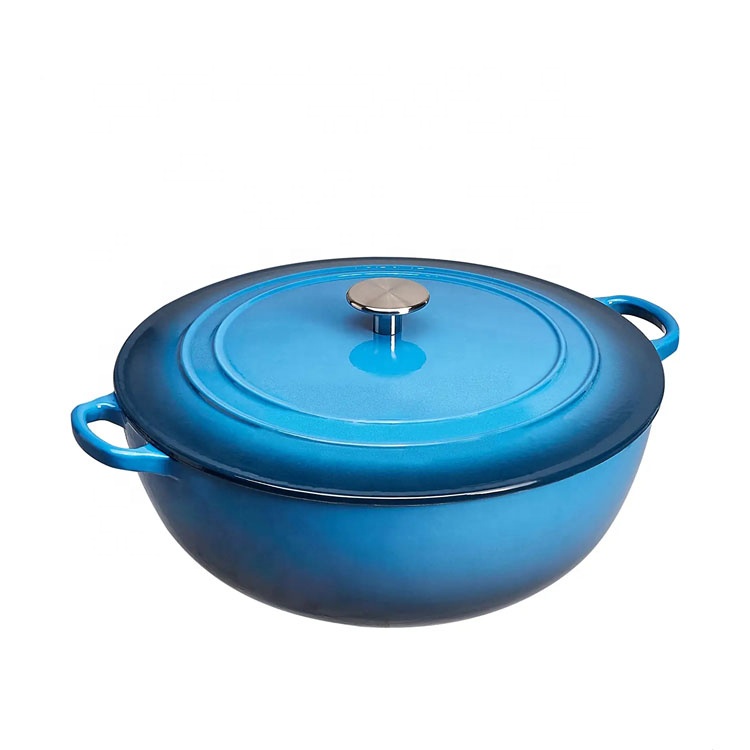
Gietyster Braisers Pan Geëmailleerde Gietyster Vlak Seekos Kookpot kasserol gereg
-

ENAMELEERDE GIETYSTER NEDERLANDSE OONDPOT (7.87" / 20 CM DIAMETER) BASSEROOL GEREG - ROND BLOU
-

Fabrieksvoorraad Emalje Gietyster Voorraadpot Pampoenvormige kasserol
-

Pasgemaakte 2 in 1 geëmailleerde gietyster kookpot OEM kombuis kookware
-
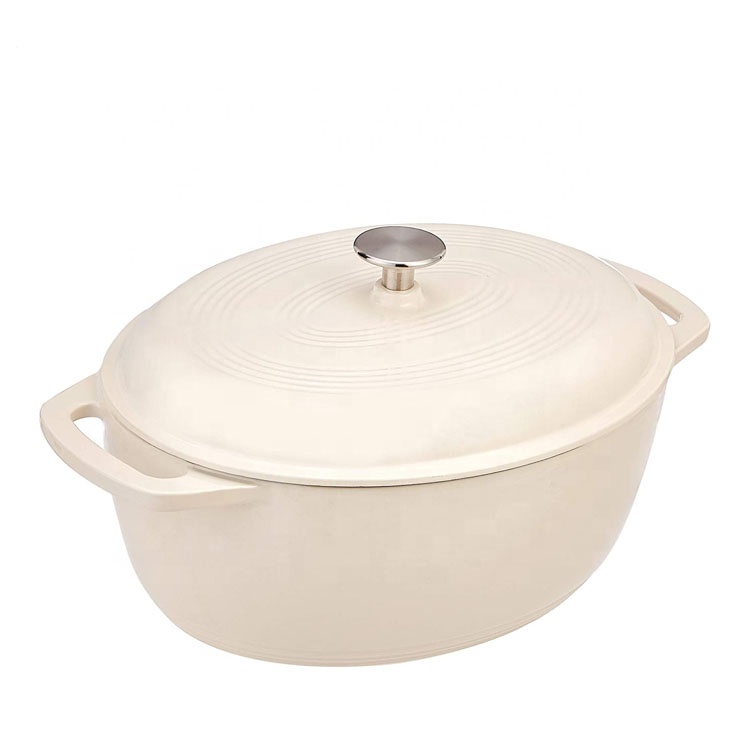
Emalje Kookkasserol Ovaal Nederlandse Oond Gietyster Emalje Ovaal Nederlandse Oondkasserol
-
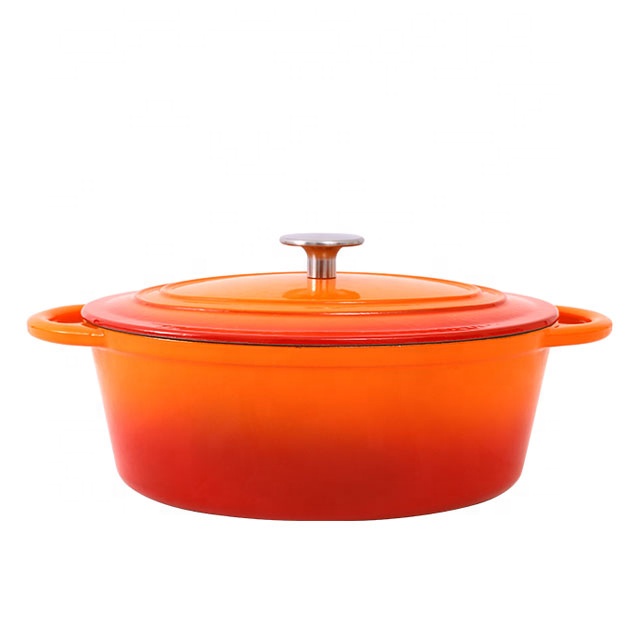
-
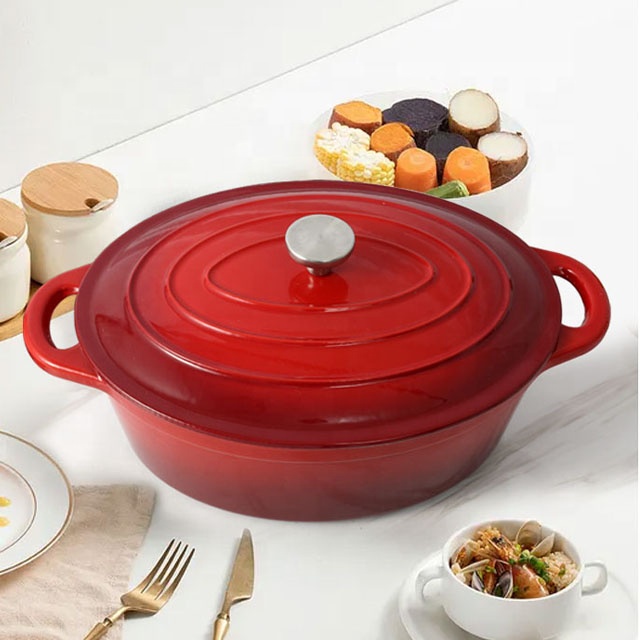
Nuwe produk met groot afslag gietyster kookware Ovaal gietyster kasserol
-

-

Ovaal gietyster emalje Nederlandse oonde Ovaal kasserol Bredie Pot Brood Oond Pot
-
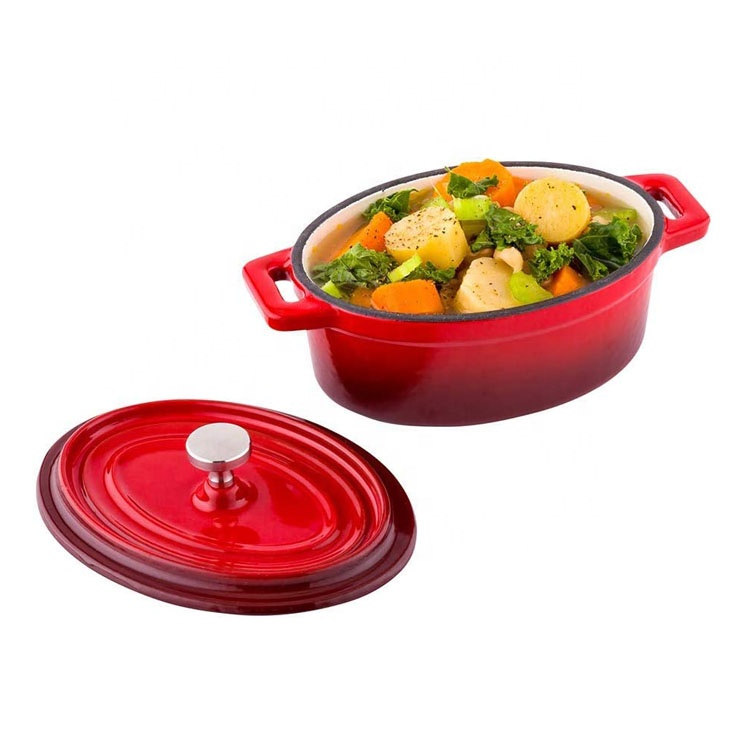
Kleurvolle Emalje Kasserol Mini Ovaal Cocotte Gietyster Mini Dien Cocotte
-

-
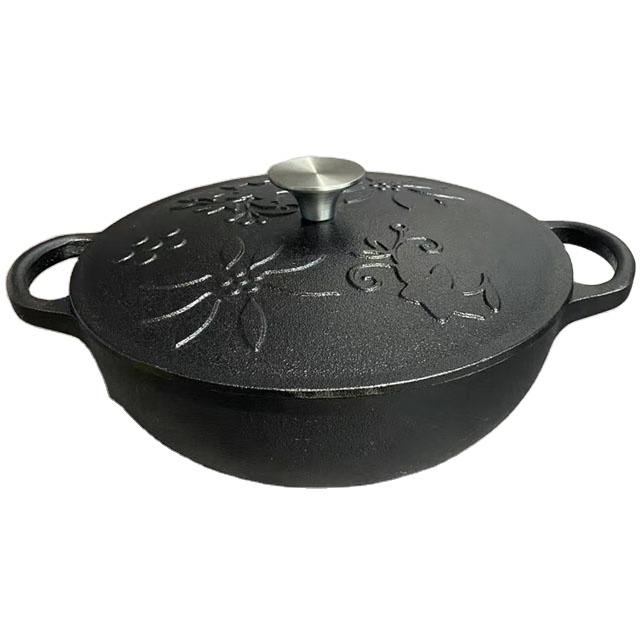
Gietyster Braisers Pan met Deksel Geëmailleerde Gietyster Kasserol Geregte Vlak Hollandse Oond
How Do I Care For My Enamel Dutch Oven?
Caring for your enamel Dutch oven is crucial to maintaining its appearance and performance. After each use, allow the pot to cool down before washing to prevent thermal shock, which could crack the enamel. Clean it using warm, soapy water and a soft sponge or cloth. Avoid using abrasive cleaners or scouring pads, as they can scratch or dull the enamel surface. For stubborn stains or burnt-on food, soaking the pot in warm, soapy water can help loosen residue.
If your Dutch oven has a dull or stained surface, a paste made of baking soda and water can effectively restore its shine. Apply the paste, let it sit for a while, and then gently scrub with a soft cloth. Additionally, it's important to avoid sudden temperature changes, such as placing a hot pot into cold water, as this can lead to cracks.
While many enamel Dutch ovens are dishwasher safe, hand washing is often recommended to prolong their lifespan. When storing your Dutch oven, consider placing a soft cloth or paper towel inside to protect the enamel from scratches caused by stacking. By following these care tips, your enamel Dutch oven can remain a beautiful and functional piece of cookware for years to come.
Can I Use My Enamel Dutch Oven For Frying?
Yes, you can use an enamel Dutch oven for frying, making it a versatile addition to your cookware collection. The heavy, thick construction of a Dutch oven helps retain heat, providing a stable cooking environment ideal for frying. Whether you’re deep-frying chicken, sautéing vegetables, or making sauces, the enamel coating ensures that food doesn’t react with the pot, preserving the flavors.
When frying in an enamel Dutch oven, it’s essential to monitor the oil temperature to ensure optimal frying conditions. Use a cooking thermometer to achieve the right temperature, typically between 350°F to 375°F (175°C to 190°C) for deep frying. Be mindful of the amount of oil; a Dutch oven allows for enough depth to accommodate frying without risking spills.
However, it’s important to avoid overheating the pot, as extremely high temperatures can damage the enamel coating. Always use moderate heat and avoid direct high heat, which can cause discoloration or chipping. After frying, allow the pot to cool down before cleaning. This method not only provides delicious results but also adds to the versatility of your enamel Dutch oven in the kitchen.
